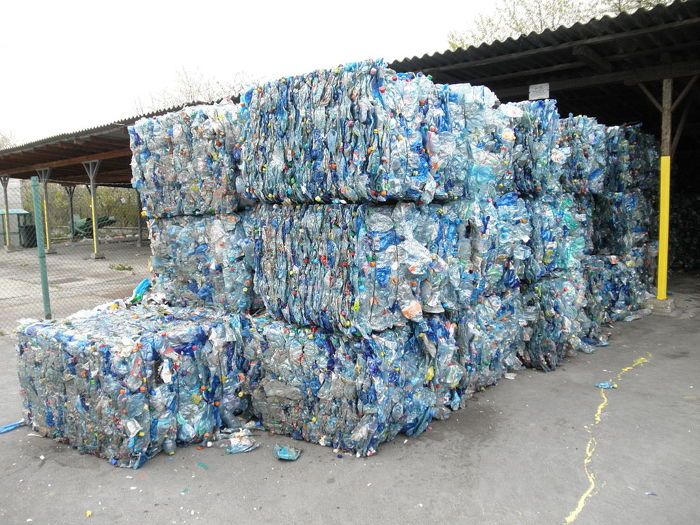Plastic Production Rises but Recycling Can’t Keep Up

Plastics serve many purposes, but as production continues to rise millions of tons of discarded plastics end up buried in landfills, floating in the world’s oceans, and burned in poorly regulated incinerators, a report from the Worldwatch Institute says.
Globally, the production of plastics rose 4% in 2013 over a year earlier to a total of 299 million tons, the report said. On average, a person living in western Europe or North America uses about 220 lb. of plastics a year, compared with the per-capita consumption of only 44 lb. in Asia, according to the report.
After serving its intended purpose, between 22% and 43% of all plastics end up in landfills. Recovering plastic from the waste stream through recycling programs or incineration for energy would help minimize wasted space and local blight associated with landfill disposal, but there’s a snag:
“Much of the plastic collected for recycling is shipped to countries with lower environmental regulation,” the report says. “And burning plastic for energy requires air emissions controls and produces hazardous ash, all while being relative inefficient.”
For example, most plastic scraps from the United States, Europe, and other countries with established recycling systems go to China, where “indirect evidence” indicates they are reprocessed at “low-tech, family-run facilities with no environmental-protection controls.” Some low-quality plastics, the report adds, are not reprocessed at all, but instead are burned for energy in plants with no pollution control devices.
A Chinese initiative called Green Fence is aimed at reducing the amount of plastics that wind up in landfills there, according to the Worldwatch Institute and this report from PRI.
Recycling lags in the United States
In Europe, 26% (6.6 million tons) of postconsumer plastic was recycled in 2012. Another 36% was burned to produce energy, and the remaining 38% went to landfills. The postconsumer rate in the United States was far lower, according to the report–only 9%, or 2.8 million tons, was recycled. The rest, 32 million tons, was thrown out.
Other findings:
- About 4% of the oil used worldwide each year goes into plastic goods. Another 4% is used to power the plastics manufacturing process.
- Between 10 million tons and 20 million tons of plastic end up in the oceans annually, where some 5.25 trillion plastic particles weighing 268,940 tons are now floating around. Plastic debris causes an estimated $13 billion a year in damages to sea life, fisheries, and the tourism industry.
- Plastics now make up 10% by weight (50% by volume) of cars made in the United States, or 336 lb. per vehicle. In 1960, a typical car contained less than 20 lb. of plastic.
“Plastics help to reduce food waste by keeping products fresh longer, allow for the manufacture of lifesaving healthcare equipment, reduce packaging mass compared with other materials, improve transportation efficiency, and have large potential for use in renewable-energy technologies,” the report says. “But plastic litter, gyres of plastics in the oceans, and toxic additives in plastic products–including colorants, flame retardants, and plasticizers (such as bisphenol A, or BPA)–are raising awareness of and strengthening consumer demand for more sustainable materials.”
Fine Homebuilding Recommended Products
Fine Homebuilding receives a commission for items purchased through links on this site, including Amazon Associates and other affiliate advertising programs.

Handy Heat Gun

Affordable IR Camera

8067 All-Weather Flashing Tape

Recycled, but where to now? Millions of tons of plastics are recycled each year, but plastic waste like these crushed PET bottles often end up in China where environmental controls have been historically weak, the Worldwatch Institute says.






















